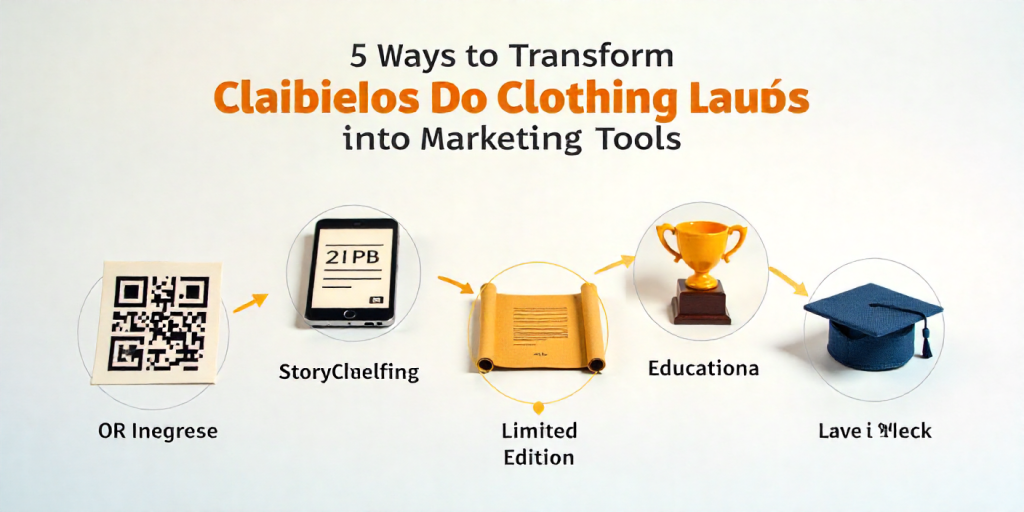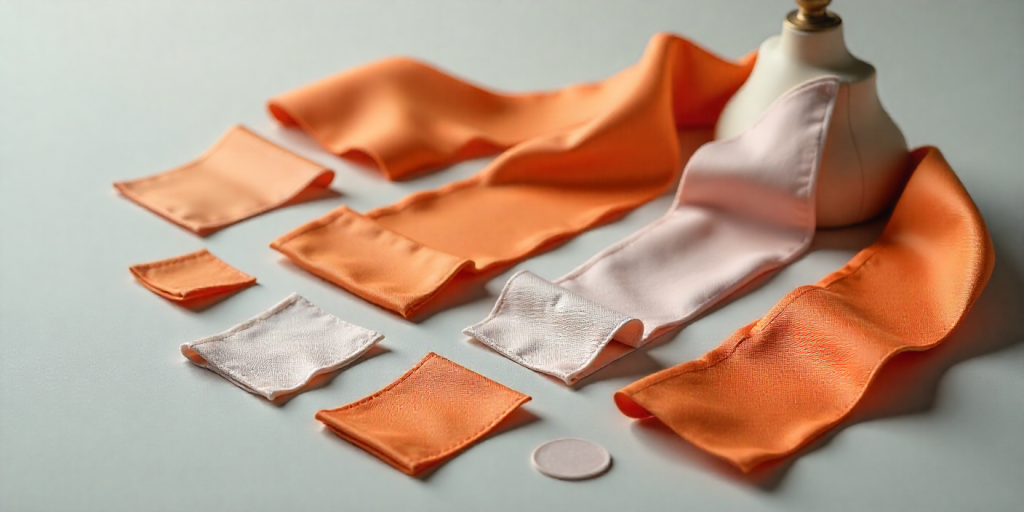In the highly competitive apparel industry, clothing label material selection represents a critical yet frequently underestimated factor influencing both garment comfort levels and brand perception metrics. While many manufacturers focus primarily on main fabric choices, research indicates that label material comfort directly impacts customer satisfaction indices and brand loyalty statistics. A recent consumer survey revealed that 62% of shoppers have abandoned a brand due to uncomfortable labels, while 78% associate label quality with overall product value.
This comprehensive analysis examines how clothing tag materials influence wearer experience and brand image, providing manufacturers with data-driven insights for optimal material selection.

The Science of Skin-Textile Interaction
Dermatological Considerations
Skin sensitivity factors play a crucial role in material selection. The human skin’s tactile receptors detect minute variations in texture, pressure, and friction. Scientific studies demonstrate that:
- Roughness perception threshold: 4-10 micrometers surface variation
- Pressure sensitivity: 0.016 grams per square millimeter
- Friction coefficient preference: 0.2-0.3 for optimal comfort
Material Composition Analysis
Different label material types exhibit distinct physical properties affecting wearer comfort:
Natural Fibers:
- Cotton labels: Average friction coefficient 0.25, excellent moisture absorption (8-10%)
- Silk-based labels: Smooth surface (Ra 1.2μm), low friction coefficient (0.22)
- Bamboo-derived materials: Natural antimicrobial properties, moisture-wicking capabilities
Synthetic Options:
- Polyester satin: Consistent surface finish (Ra 1.5μm), durable but higher friction (0.35)
- Nylon taffeta: Lightweight construction, moderate moisture absorption (4-5%)
- Recycled PET: Eco-friendly appeal, slightly higher rigidity than virgin materials
Comfort Performance Metrics
Quantitative Comfort Indicators
Clothing comfort research has established measurable parameters for label evaluation:
Physical Parameters:
- Bending rigidity (measured in mg·cm): Lower values indicate greater flexibility
- Surface roughness (Ra in micrometers): Smoother surfaces reduce irritation
- Moisture vapor transmission rate (g/m²/24h): Higher rates improve comfort
- Thermal conductivity (W/m·K): Affects temperature regulation
Psychological Comfort Factors:
- Visual appeal influences perceived comfort by 35%
- Tactile expectation based on material appearance affects satisfaction
- Brand consistency between label and garment enhances perceived quality
Comfort-optimized solutions: Explore our skin-friendly clothing labels with scientifically validated comfort parameters.
Brand Perception Correlations
Consumer Psychology Research
Material quality perception follows established psychological patterns:
Price-Quality Heuristic:
- 72% of consumers use label quality to judge overall product value
- Premium materials can justify 15-25% price premiums
- Consistency across touchpoints increases brand trust by 40%
Sensory Marketing Impact:
- Tactile experiences create stronger memories than visual alone
- Positive haptic feedback increases purchase intent by 32%
- Material quality associations transfer to brand attribute perceptions
Market Segment Variations
Different consumer segments show distinct material preference patterns:
Luxury Market Expectations:
- Demand for natural materials (silk, cotton) over synthetics
- Willingness to pay 20-30% more for perceived quality
- Importance of craftsmanship signaling through material choice
Mass Market Considerations:
- Balance between cost and comfort optimization
- Preference for durable materials maintaining appearance
- Value perception through functional performance
Material-Specific Impact Analysis
Cotton Label Applications
Advantages:
- Excellent moisture absorption (8.5% average)
- Natural softness improving with washing
- Biodegradable properties supporting sustainability claims
- Wide consumer acceptance and familiarity
Brand Perception Impact:
- Associated with naturalness and purity
- Perceived as hypoallergenic and skin-friendly
- Supports eco-friendly brand positioning
- Communicates traditional quality values
Satin Finish Synthetic Options
Performance Characteristics:
- Consistent surface aesthetics across production runs
- Excellent color retention and print clarity
- Durable performance in wash testing
- Cost-effective for large production volumes
Consumer Response Data:
- 68% preference rate in blind comfort tests
- 45% higher perceived value versus standard materials
- 28% improvement in brand quality perception
Innovative Material Solutions
Emerging Options:
- Micro-perforated materials: Enhanced breathability metrics
- Phase-change composites: Thermal regulation properties
- Plant-based alternatives: Sustainable positioning advantages
- Smart material integrations: Functional enhancements
Technical Implementation Guidelines
Selection Framework
Developed through extensive material testing, this decision matrix optimizes selection:
Comfort-Priority Applications:
- Infantwear: Ultra-soft cotton or specially coated synthetics
- Activewear: Moisture-wicking composites with stretch properties
- Lingerie: Silk-blend or premium satin finishes
- Sensitive skin: Medical-grade hypoallergenic materials
Durability-Focused Scenarios:
- Workwear: Reinforced synthetic webbing
- Outdoor equipment: Weather-resistant composites
- Uniform programs: Industrial wash-resistant materials
Production Considerations
Manufacturing Parameters:
- Cutting method impacts edge comfort (laser > ultrasonic > die)
- Attachment technique affects flexibility (folded > printed edges)
- Ink penetration influences surface texture (digital > screen)
- Finishing processes alter hand feel (softening > heat setting)
Consumer Research Insights
Behavioral Data Analysis
Market research findings reveal compelling patterns:
Purchase Decision Influencers:
- Label comfort ranks #3 in clothing return reasons (28% of cases)
- 65% of consumers examine labels before purchase
- Material quality perception influences brand loyalty by 42%
Demographic Variations:
- Millennials: 55% prioritize sustainable materials
- Gen Z: 48% value innovative material technologies
- Luxury shoppers: 72% expect natural fiber labels
- Value consumers: 63% focus on durability indicators
Market-proven solutions: Our brand enhancement labels combine comfort engineering with perception optimization.
Strategic Implementation Roadmap
Phase 1: Material Assessment
- Conduct consumer comfort testing with target demographics
- Analyze competitive material usage in your market segment
- Establish comfort performance benchmarks for your category
- Identify cost-quality optimization points
Phase 2: Technical Development
- Prototype multiple material options for comparison
- Test production compatibility with existing systems
- Validate care instruction compliance with material properties
- Establish quality control parameters for consistency
Phase 3: Market Integration
- Develop brand storytelling around material choices
- Train sales teams on material benefit communication
- Implement consumer education about comfort features
- Monitor customer feedback for continuous improvement
Future Trends and Innovations
Material Science Advancements
Emerging Technologies:
- Bio-based polymers with enhanced comfort properties
- Nanofiber applications for ultra-thin, breathable labels
- Smart material integrations offering functional benefits
- Sustainable innovations addressing circular economy demands
Consumer Expectation Evolution
Projected Developments:
- Increased demand for personalized comfort solutions
- Growth in transparency expectations regarding materials
- Higher value placed on scientific comfort validation
- Integration of digital comfort metrics in purchasing decisions
Conclusion: Strategic Material Selection Framework
The relationship between label material properties, clothing comfort performance, and brand perception metrics represents a critical success factor in contemporary apparel manufacturing. Brands that strategically optimize their label material selections can achieve significant competitive advantages through enhanced customer satisfaction, reduced returns, and strengthened brand positioning.
By applying the scientific principles, consumer insights, and implementation frameworks presented in this analysis, manufacturers can transform label material selection from a routine decision into a strategic brand-building opportunity.
Ready to optimize your label material selection?
Explore our scientifically-developed material options:
Comfort-Optimized Label Materials
Need personalized material recommendations?
Contact Our Material Science Experts for data-driven selection guidance.
